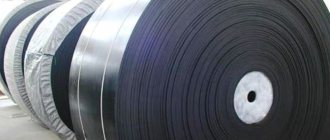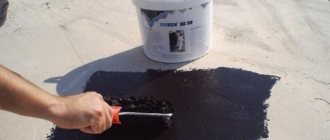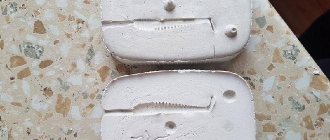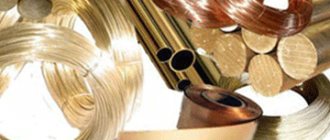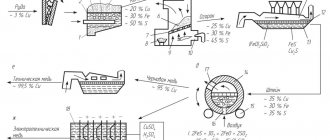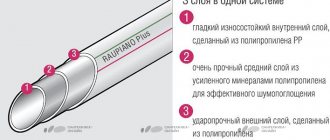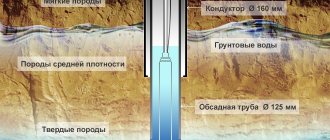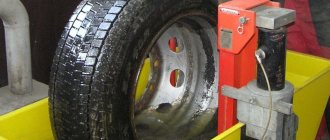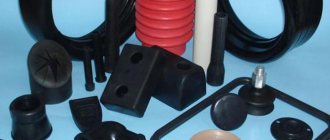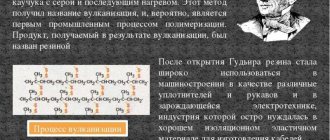Types of rubber sheets
The fundamental document for sheet rubber manufacturers is GOST 7338-90. This document applies to rubber plates, which are intended for the production of parts used to seal fixed joints, preventing friction between the surfaces of parts made of metal. In addition, parts made of this type of rubber must withstand shock loads that can occur in machines and mechanisms operating in various industries and construction. The same documents define the types of rubber and the operating conditions for which they are intended. Thus, oil-resistant rubber has three degrees of hardness, and can operate at temperatures from -40 to +90 degrees Celsius. It must remain operational in environments containing fats, oils, emulsions, inert gases and steam.
GOST determines that, depending on the scope of application and operating conditions, three main types of technical sheet rubber are produced.
Oil and petrol resistant sheet rubber
Sheet rubber oil-resistant
Heat-frost-acid-shallow-resistant sheet rubber
- heat-frost-acid-shallow-resistant (TMKShch);
- oil resistant MS;
- oil and petrol resistant MBS.
The TMKShch rubber plate remains operational in environments such as aqueous, acidic, alkaline and gas. It can be used, depending on the degree of hardness, from -45 to +90 degrees Celsius.
Oil-gasoline-resistant (MBR) sheet rubber can operate in oily or in environments in which hydrocarbon fuels are present. The operating temperature range is from -30 to +80 degrees Celsius.
Several other types of rubber are produced in sheet form:
- vacuum;
- silicone;
- spongy.
Sponge sheet technical plate
Silicone rubber sheets Vacuum sheet technical plate
White vacuum rubber brand 7889 is distinguished by the following parameters - it is insensitive to high pressure and temperature, has high elasticity and at the same time it successfully resists compression. Vacuum rubber, in addition to the sheet version, can be supplied to the consumer in the form of sleeves, cords, etc. Vacuum rubber also includes colored vulcanized sheet rubber. By the way, different colors do not carry any meaning. Such rubber is produced solely for aesthetic reasons. Silicone sheet rubber is a material that is produced using high molecular weight substances, which include silicon and some organic substances. In appearance it is indistinguishable from that produced from ordinary rubber. But its chemical formula allows it to work in a temperature range from -50 to +480 degrees Celsius. If the ambient temperature is no more than +100 degrees, then we can say that parts made of this type of rubber will work forever. By the way, working in such extreme conditions for a long time does not affect its operational workshops.
Spongy (porous) rubber is essentially foamed rubber that can be molded into sheets, etc. The industry produces several brands of these products, which differ from each other in density and areas of application. By the way, porous rubber is often used for creativity.
Food grade sheet rubber is produced in accordance with the requirements of GOST 17133-83. Products made from this material are used to make seals that come into contact with food substances. The technical plate can be supplied to the customer in the form of plates of a certain size or in the form of rolls.
Rubber compounds
Products made from rubber compounds operate in various climatic conditions and environments (air, water, acids, alkalis, oils, fuels, etc.).
The following groups are produced:
– intended for the manufacture of various sealing and other products that are operable in air, water, weak solutions of acids and alkalis with a concentration of up to 20% by volume (except for acetic and nitric acids); rolled; (a – soft, b – hard, c – increased hardness).
– designed for the manufacture of various sealing joints and other products that are functional in contact with oils and fuels, rolled, (1 – limited oil and petrol resistance, 2 – medium oil and petrol resistance, 3 – increased oil and petrol resistance).
– designed for the manufacture of various sealing and other products that can operate in oils and fuels in areas with cold climates, rolled.
– intended for the manufacture of shock-absorbing and power parts; rolled. Operable: 1) in air and in contact with water, weak solutions of acids and alkalis; 2) in contact with oils and fuels.
– rubber mixtures for the manufacture of semi-ebonite and ebonite products, as well as for lining shafts and other products; rolled and calendered.
– rubber mixtures used for the production of adhesives.
– rubber compounds used for repairs in the shoe industry.
The list of commercial rubber mixtures by purpose and operating temperature range is presented in the tables. Commercial unvulcanized rubber mixtures TU 2512-046-00152081-2003
| Conventional designation rubber compound groups | Tire brand | Rubber type | Hardness units Shora A (within) | Working conditions | Technological properties | |
| Wednesday | Operating temperature range | |||||
| Rubber mixtures for various sealing and other products: | ||||||
| a) soft | ||||||
| Iа-8 Iа-11 Iа-11 Iа-11 Iа-15 Iа-19 | Kz668-11 52-563-3 6A-2 Kz271-2 Kz651 7889 | SKI-3 BNKS SKI-26 SKI-3+ SKI-26mp SKI-3NK | 35-65 35-65 35-65 35-65 35-65 35-65 | Air, water, weak solutions of acids and alkalis with a concentration of up to 20% by volume (except acetic and nitric acids) | -25 to 70 -30 to 90 -30 to 90 -30 to 90 -40 to 70 -45 to 70 | Molded Calendered Molded Molded Syringed Molded Calendered Molded |
| b) medium hardness | ||||||
| Ib-10 | KZ-161 | SKMS-30 RKM-15+ SKI-3 | 50-70 | -«»- | -30 to 70 | molded calendered extruded |
| Ib-13 | 15-Kz-712 | SKMS-30 ARKM-15 | 50-70 | -«»- | -35 to 70 | -«»- |
| SKN-18+ SKN-26 | 55-70 | -«»- | -«»- | -«»- | ||
| Ib-15 | 6429 | SKMS-30 ARKM-15 | 50-70 | -«»- | -40 to 70 | -«»- |
| Ib-19 | 15-Kz-140 | SKI-3+ SKD | 55-70 | -«»- | -45 to 70 | -«»- |
| c) increased hardness | ||||||
| IV-13 | 6190 | SKMS-30 ARKM-15 +SKD | 60-80 | -«»- | -35 to 70 | -«»- |
| Limited oil and petrol resistance | ||||||
| a) soft | ||||||
| III-Ia 8 | KZ-901 | SKN-26+ SKMS-30 ARKM-15 | 35-65 | In contact with oils and fuels | -25 to 70 | Molded and calendered |
| b) medium hardness | ||||||
| III-Ib-12 | KZ-654 | Nairit or SKN-18cm+ SKN-26cm | 50-70 | -«»- | -30 to 100 | -«»- |
| III-Ib-12 | KZ-691 | nairit | 50-70 | -«»- | -«»- | |
| III-Ib-14 | KZ-693 | nairit | -«»- | -35 to 100 | -«»- | |
| III-Ib-17 | 15-Kz-900 | SKN-26cm+ SKMS-30 ARKM-15 | 50-70 | -«»- | -40 to 100 | -«»- |
| III-Ib-20 | NO-68-1 | SKN-26cm+ nairit | 50-70 | -«»- | -45 to 100 | -«»- |
| c) increased hardness | ||||||
| III-Iв-12 | 1028 | SKN-26mp | 65-85 | -«»- | -30 to 100 | -«»- |
| III-Iв-14 | KZ-707 | nairit | 65-85 | -«»- | -35 to 100 | molded |
| III-Iв-17 | 4326-1 | SKN-18cm | 65-85 | -«»- | -40 to 100 | molded calendered extruded |
| III-Iв-20 | V-14tb | SKN-18cm | 65-85 | -«»- | -45 to 100 | molded, extruded |
| III-Iв-20 | 4410 | SN-18s | 70-85 | -«»- | -45 to 100 | |
| Medium oil and petrol resistance | ||||||
| a) soft | ||||||
| III-2a-17 | Kz664 | SKN-26cm+ SKN-18cm | 35-65 | In contact with oils and fuels | -40 to 100 | molded, calendered |
| b) medium hardness | ||||||
| III-2b-12 | 7-57-5006 | SKN-26 | 50-70 | -«»- | -30 to 100 | molded |
| III-2b-12 | 9831 | SKN-26cm+ SKN-18cm | 50-70 | -«»- | -«»- | -«»- |
| III-2b-14 III-3b-12 | Kz663 | SKN-26cm+ SKN-18cm | 50-70 | -«»- | -35 to 100 | Shaped, calendered |
| III-2b-20 | Kz122 | SKN-26 | 50-70 | -«»- | -45 to 100 | Molded, extruded |
| III-2b-20 | Tz-9012 | SKN-26cm+ SKN-18cm | 50-70 | -«»- | -«»- | Shaped, calendered |
| c) increased hardness | ||||||
| III-2v-14 | 7-1023t | SKN-26cm+ SKN-18cm | 60-90 | -«»- | -35 to 100 | Molded, extruded |
| Increased oil and petrol resistance | ||||||
| a) soft | ||||||
| III-3a-17 | Kz664 | SKN-26cm+ SKN-18cm | 30-60 | -«»- | -40 to 100 | Shaped, calendered |
| b) medium hardness | ||||||
| III-3b-12 | Kz663 | 50-75 | -«»- | -30 to 100 | -«»- | |
| c) increased hardness | ||||||
| III-3v-6 | 4004 | SKN-40s | 65-95 | -«»- | -20 to 100 | Molded, extruded |
| III-3v-6 | 3825 | 65-95 | -«»- | -«»- | -«»- | |
| III-3v-6 | 3826t | SKN-26cm | 65-95 | -«»- | -«»- | -«»- |
| III-3v-6 | Kz694 | SKN-40s | 65-95 | -«»- | -«»- | Shaped |
Technical characteristics of sheet rubber
As already noted, the main technical parameters of sheet rubber are regulated in GOST 7338-90. By the way, in some documents you can find references to GOST 7339-65, which is no longer valid.
Technical characteristics of sheet rubber
In particular, it determines that the finished product has the following dimensions:
- Sheets width from 250 to 1350, length from 250 to 1000 mm.
- Rolls width range from 250 to 1750, length can reach 10,000 mm.
- The thickness of the technical plate ranges from 1 to 60 mm.
- The specific gravity of the technical plate varies within 1000 g per 1 cubic meter. dm.
The technical characteristics of the vacuum plate are supplemented with the following parameters:
- The dimensions of the technical plates, mostly square in shape, are 500x500, 600x600, 700x700, etc.
- It must remain operational at temperatures from -8 to +70 degrees Celsius.
The vacuum plate is produced in accordance with the requirements of TU 38105116-81. Special transformer materials are also produced in the form of sheets or rolls. It is used in the production of transformers and other devices used in electrical engineering. Technical requirements for it are defined in GOST 12855.
Silicone sheets: characteristics, price, application of technical sheets
When ordering from 50,000 rub. — an exclusive gift (not a kickback or a bribe!),
this will be a reason to become our regular customer.
| Weight, kg | Price, rub./linear m. | Wholesale price, rub./linear m. | |
| 1x1000 | 1,25 | 3 050 | 2 800 |
| 2x1000 | 2,50 | 4 550 | 4 100 |
| 3x1000 | 3,75 | 6 250 | 5 650 |
| 4x1000 | 5,00 | 7 550 | 7 180 |
| 5x1000 | 6,25 | 8 550 | 8 180 |
| 6x1000 | 7,50 | 9 050 | 8 200 |
| 8x1000 | 10,00 | 13 750 | 12 450 |
| 10x1000 | 12,50 | 15 750 | 14 300 |
| 1x1600 (membrane) | 2,00 | 3 950 | |
| 2x1600 (membrane) | 4,00 | 6 500 | |
| 3x1600 (membrane) | 6,00 | 9 250 | |
| 4x1600 (membrane) | 8,00 | 11 300 | |
| 5x1600 (membrane) | 10,00 | 13 700 |
Silicone wafers are in demand almost everywhere today. Rolled silicone rubber is a high-quality and safe material with excellent performance properties. It is odorless, non-toxic and has high heat and frost resistance, the operating temperature range is from -60° C to +250° C.
Silicone's excellent resistance to environmental influences such as ozone, ultraviolet radiation, precipitation, temperature fluctuations, resistance to solutions of salts, alcohols, phenols, mineral oils, acids and alkalis, hydrogen peroxide makes it an ideal material for use in places where The lifespan of the material is important.
It is easy to make a wide range of different products from rolled silicone rubber.
Aviation and automotive enterprises manufacture and widely use various types of protective shock-absorbing and vibration pads and seals to increase the service life of mechanisms.
Due to their exceptional tensile strength, silicone wafers are widely used in mining, oil refining and chemical plants to produce seals, washers and gaskets that offer high resistance to deforming forces with minimal degradation over time, resistance to hydrolysis and oxidation.
Low adhesion, non-toxicity, absolute environmental safety and ease of compliance with hygienic standards have made the use of silicone rubber in rolls indispensable in the food, agricultural and medical industries.
The special properties of silicone rubber, for example, resistance to arc voltage, radiation, vacuum and electric fields, contribute to its widespread use in electrical engineering.
Durability of silicone rubber products
| Temperature (°C) | Durability |
| -50 — +100 | unlimited |
| +120 | 10-20 years |
| +150 | 5-10 years |
| +205 | 2-5 years |
| +260 | 3 months - 2 years |
| +316 | 1 week - 2 months |
| +370 | 6 hours - 1 week |
| +420 | 10 minutes - 2 hours |
| +480 | 2-10 minutes |
Designation of sheet rubber
Sheet rubber designations
In order for consumers of products of this class to be able to easily navigate the nomenclature of rubber goods, a procedure for designating finished products has been determined. For example, the entry plate 2N-1-TMKShch-S-5 means that in front of the customer there is an unmolded (N) sheet of rubber (1) plate of the second class, medium hardness (C). TMKShch – plate grade. The last number indicates the thickness of the sheet.
Scope of application of sheet rubber
Technical plates produced in accordance with the requirements of GOS 7338-90 have found their application in various industries - mechanical engineering, aviation, machine tools, food, nuclear, etc. Products made from this material are used in the production of products used in healthcare, sports, etc.
Most often, sheet rubber is used for the production of insulating and sealing gaskets. In addition, it is used in shock-absorbing devices, etc.
Foam rubber
Porous rubber, soft rubber , is an elastic material that is divided into several types depending on the base (EPDM, SBR, NBR, CR rubbers - polychloroprene), pores (closed, interconnected and mixed). The properties of porous rubber depend on the properties of the polymer base, as well as on the density, composition and pore structure.
The pore size will vary from approximately 0.4 microns, such rubber is called microporous to 0.4 mm. The pore volume in the general rubber composition, depending on the type of rubber, can vary from 20% to 80%.
Compared to monolithic rubber, porous rubber has a number of advantages. Thus, it has increased elasticity, softness, high shock-absorbing and noise-vibration insulation properties.
Soft rubber can be used with equal success in both tropical and temperate climates. EPDM and Neoprene CR can be used even in the far north.
Porous rubbers, varying in their properties, can be used in fairly harsh environments and conditions:
- acid, alkali (EPDM, NEOPREN),
- high and low temperatures (EPDM, NBR, NEOPREN),
- oil, gasoline (NBR),
- solvents, water, ozone, UV (NEOPREN).
Types of foam rubber
Porous rubber can be called differently: foam rubber, soft rubber, sponge rubber, porous technical plate, cellular rubber. This material is manufactured in several types:
- Porous technical plate - for use in construction, shipbuilding, and mechanical engineering.
- Porous technical plate for food - used where there is contact with food products.
- Vacuum technical plate – used for laying fixed connections, including in vacuum installations.
- Membrane fabric or rubber-fabric technical plate - diaphragms, gaskets and all kinds of flat gaskets are usually made from it.
- Self-adhesive porous rubber - used in the automotive industry and as insulation for windows, doorways, etc.
Production of porous rubber from rubber:
The essence of this process is the plasticization of rubber and the addition of all the ingredients included in the recipe. The only exceptions are pore formers. These substances are introduced into the total mass of components last.
Typically, the resulting mixture consists of 80% rubber. The ductility of this component determines the quality of the porous rubber. Typically, manufacturers try to use natural rubber, since if it is replaced with synthetic rubbers, for example, butodiene copolymers based on acrylic acid nitrile or butodiene polymers, the result is low-strength vulcanizers. To prevent this from happening, carbon black is added to synthetic rubbers.
Blowing agents are substances that decompose at a lower temperature than the vulcanization temperature and release gases. The type of porous rubber depends on the type of blowing agent, as well as on the amount of vapor-forming organic or inorganic substances, which can range from 2 to 30%.
Pore-forming substances are added to the mixture of ingredients at a temperature of 40-60 °C.
After the pore-forming substances have been added, the resulting mixture is processed using a syringe machine or calender. This happens at lower temperatures.
Vulcanization is carried out under conditions of both constant and changing temperatures. The height of the temperature regime, as well as the time of the vulcanization process, depends on the thickness of the product, the composition of the porous rubber, accelerators and the type of pore-forming substance.
Modern technologies that allow varying the chemical composition of the mixture, the plasticity of rubber and vulcanization, make it possible to obtain porous rubber with different characteristics. It can be soft and hard, with different pore diameters, etc.
Vulcanization of the foam occurs in special forms, and after washing, the porous rubber is dried and processed.
